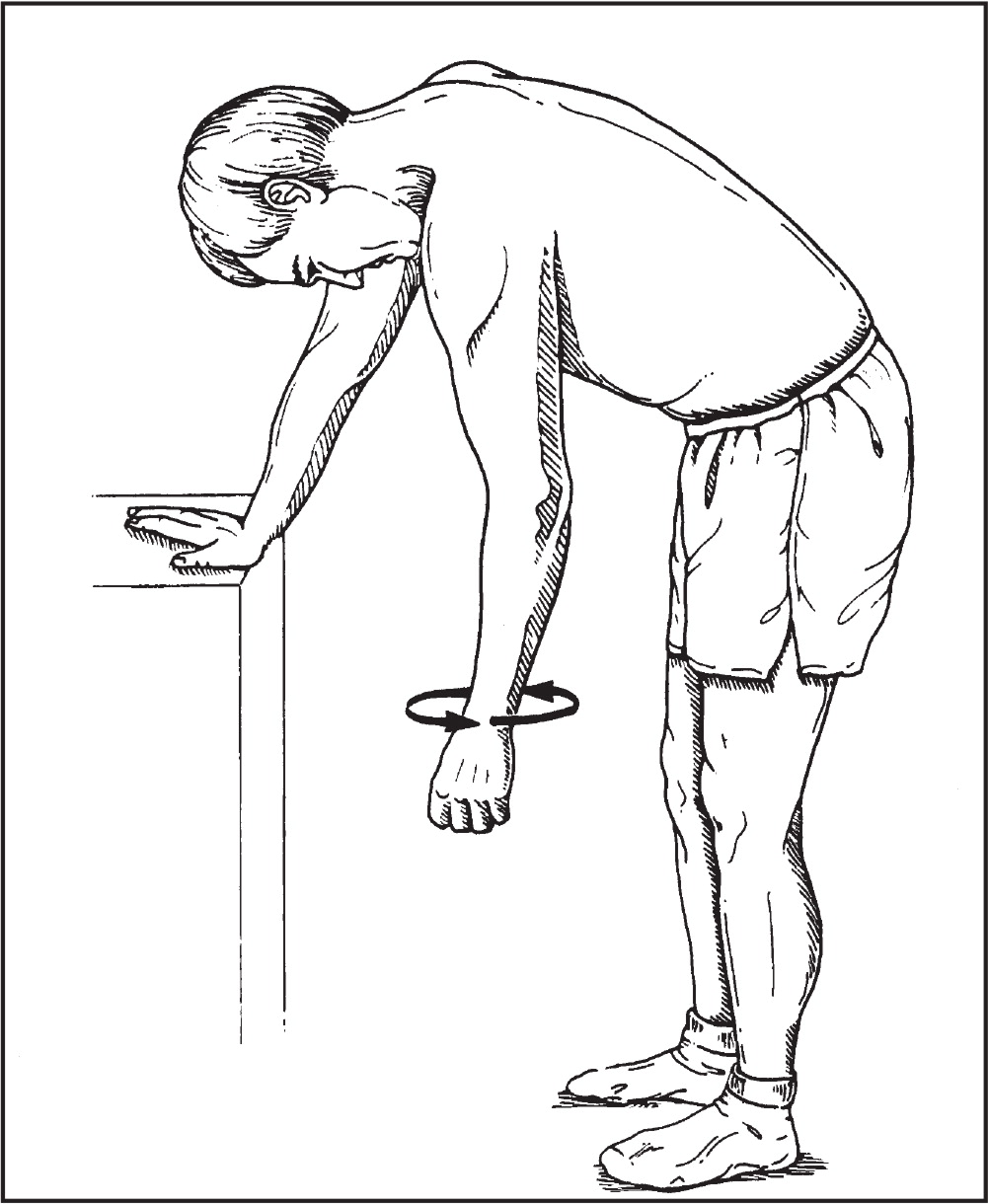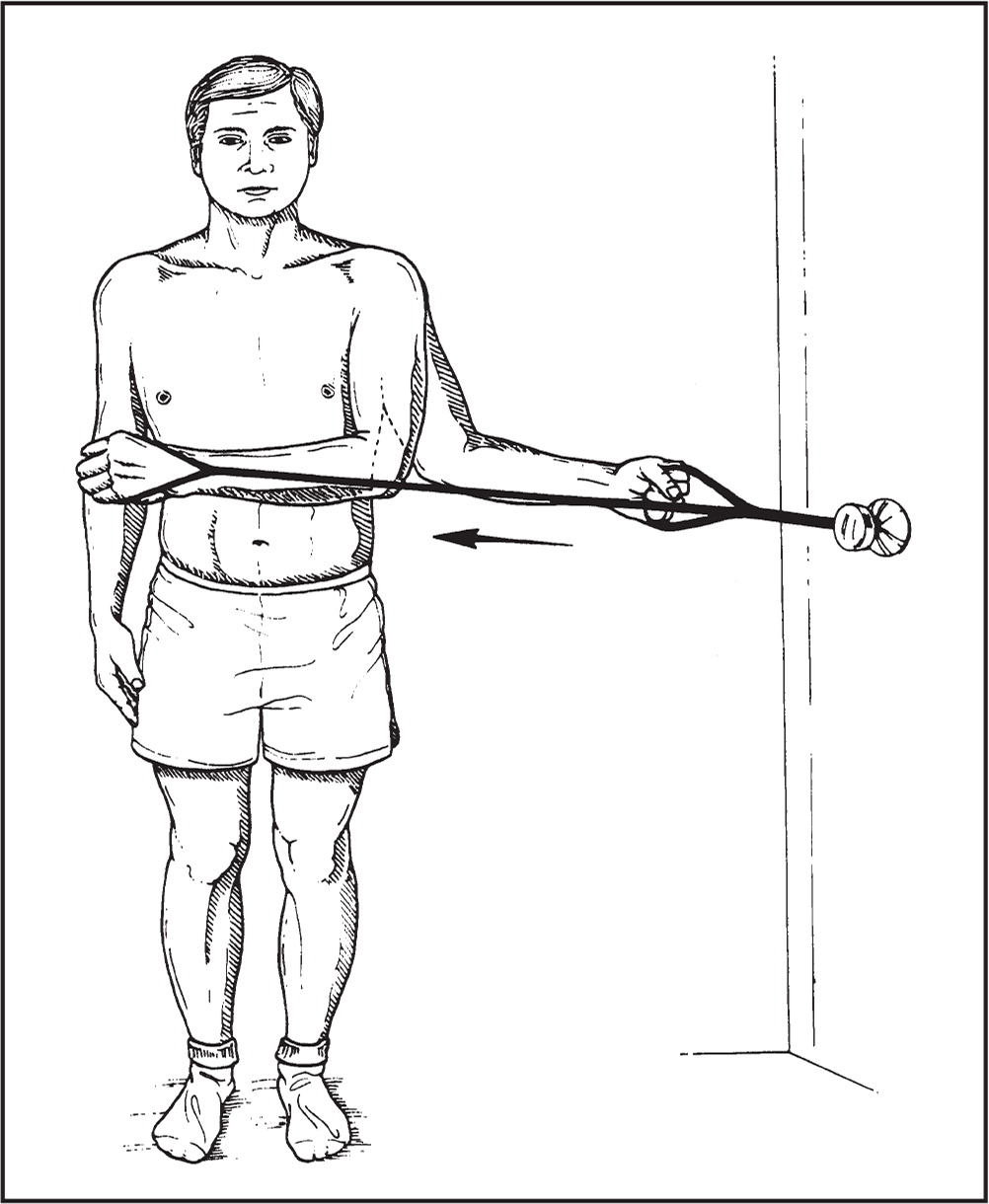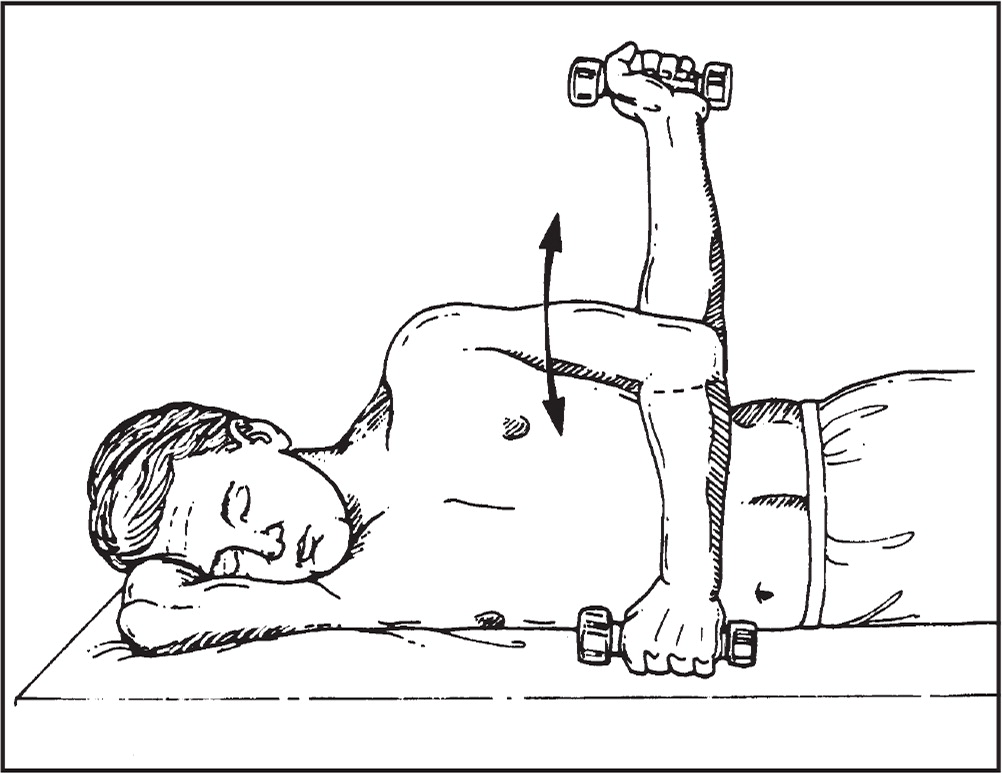
Am Fam Physician. 2023;107(5):online
Related article: Acute Shoulder Injuries in Adults
What causes pain in my shoulder?
A common cause of shoulder pain is soreness of the tendon in the rotator cuff. The tendon is a cord that attaches a muscle to another body part. The rotator cuff is the part of the shoulder that helps the arm move in a circular motion. Another common cause of shoulder pain is soreness of the subacromial bursa (say: SUB-ah-CROW-mee-uhl BUR-sah). This is a pad of fluid under the highest part of the shoulder. You might be sore after doing things that require you to lift your arms, like painting a house, lifting boxes, or playing tennis. Or you may not be aware of any specific injury or activity.
The main shoulder joint is formed by the arm bone and the shoulder blade. The joint socket is shallow to allow a wide range of motion in the arm. The rotator cuff is made up of four muscles that surround the arm bone. This cuff keeps the shoulder steady as the arm moves.
How does the rotator cuff get hurt?
One of the muscles rests on top of the shoulder. Its tendon travels under the bone on the outside of the shoulder. This tendon is the one most often injured because of its position between the bones. As the tendon becomes inflamed (sore and swollen), it can be pinched between the two bones. The pad of fluid that cushions the tendon also can be damaged.
How do I know my rotator cuff is hurt?
If the rotator cuff is hurt, you will usually feel the pain in the front or outside of your shoulder. This pain tends to be worse when you raise your arm or lift something above your head. The pain can be bad enough to keep you from doing even the simplest tasks. Pain at night is common, and it may be bad enough to wake you up.
What can I do to help the pain?
Treatment should do two things: (1) help your pain and (2) help you get back normal function in your shoulder. Pain relief includes the following steps:
Active rest (no heavy lifting, but keep moving your shoulder)
Physical treatments such as ultrasound
Applying ice
Medicine such as ibuprofen (some brands: Advil, Motrin) or naproxen (brand name: Aleve)
Occasionally, an injection of steroids into your shoulder
Normal function can be restored with special exercises. The first step is simple range-of-motion exercises. By bending over and moving (rotating) your shoulder in large circles, you can help avoid a serious complication of rotator cuff injury called frozen shoulder. Range-of-motion exercises are followed by exercises using rubber tubing or light dumbbells. The final step is training with weight machines or free weights.
What exercises should I do?
The following exercises may help you (see Pictures 1, 2, and 3). Check with your doctor to see if you should do other exercises, too.
Range of motion. Stand up and lean over so that you are facing the floor (see Picture 1). Let your sore arm dangle straight down. Draw circles in the air with your sore arm. Start with small circles and then draw bigger ones. Repeat these exercises five to 10 times every day. If you have pain, stop. You can try again later.



Are there other things I can do to help this injury heal?
An aerobic exercise program will improve blood flow to the tendon and bursa. Increased blood flow helps reduce soreness. Smokers should quit smoking so that more oxygen will reach the injured tendon. This will help the injury heal faster.
Rotator cuff strengthening (see Picture 2). Use a piece of rubber tubing made for these exercises. Stand next to a closed door with a doorknob. Loop the tubing around the knob. With the hand that is closest to the door, bend your arm at a 90-degree angle, keep your elbow at your side, and grab the loop of the tubing. Pull the band across your stomach. At first, do this 10 times (this makes one set). Try to do more sets as your shoulder pain lessens. Do these exercises every day.
Will I need surgery?
Sometimes an injury that lasts a long time will cause the tendon to tear. This type of injury may need surgery. You might have a torn rotator cuff if the pain goes on in spite of a good exercise program or if you still have weakness with some arm motions.
Body strengthening. As your pain goes away, try adding a general upper body weight-lifting program using weight machines or free weights. As in Picture 3, you can lie on your side with a weight in the hand of the arm you are not lying on. Keep your elbow at your side as you raise your forearm toward the ceiling and then lower it back down.
How do I know if I need any tests or special imaging?
The need for imaging and further tests depends on the suspected cause of your shoulder pain. X-rays are usually the first tests to be ordered and are often used to evaluate acute trauma, tendonitis, and arthritis. Computed tomography (CT) is used for fractures, dislocations, or injuries to artificial joints. It can also be used to check for soft tissue masses and abscesses. Magnetic resonance imaging (MRI) is best for evaluating the muscles of the rotator cuff, tendons, and bursa. If ultrasound of the shoulder is available, it can also evaluate the same structures.
